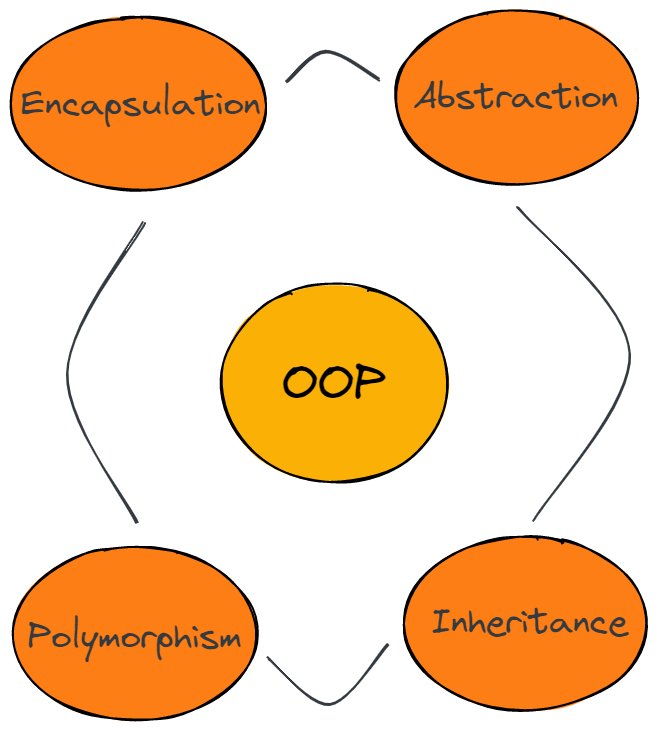1. What is Object-Oriented Programming?
Object-Oriented Programming is a programming paradigm defined using objects instead of only functions and methods. The objects contain data, called attributes, and methods that provide the logic or supporting code for a given logic unit. Some of its main principles include inheritance, polymorphism, encapsulation, and abstraction.
2. What are some advantages of Object-Oriented Programming
- Problems of any level of complexity can be supported
- Highly complex problems can be handled
- It provides an efficient mechanism for code reuse using inheritance which reduces redundancy
- It provides a mechanism for hiding data
- It is based on a bottom-up approach
- It offers flexibility through polymorphism
- It improves the maintainability of the code
3. What are the main principles of OOPs?
Object-Oriented Programming has four main principles, and they are the following:
- Inheritance
- Encapsulation
- Polymorphism
- Data Abstraction

4. What is a class?
A class defines the definition of an object, and thus, it can be used to create objects at runtime. It provides the data structure, initial values for the attributes, and methods that provide the logic for the intended behavior of the object.
1class Test {
2 // member variables
3 // methods
4}The class does not consume memory at runtime.
A class refers to a logical entity- for example, a vehicle may be defined as a class.
5. What is an object?
An object refers to the runtime instance created from the class during program execution. Objects can refer to real-world entities that have attributes and methods (logic) to support the behavior. Objects consume memory space only after they are initialized.
1// Declaring and initializing an object
2let t = new Test();
6. What is a constructor?
A constructor is a method that is used for initializing the objects, from their classes. They are special types of methods that have the same name as the class, and they can be parameterless or initialize values for the attributes of the object.
There are three types of constructors:
– Default Constructor – Without parameters
– Parametric Constructor – Includes parameters to create a new instance of a class and also pass arguments simultaneously to provide different values to the distinct objects at the time of their creation
– Copy Constructor – Creates a new object as a copy of an existing object
xxxxxxxxxxclass Test { constructor(id, name) { this.id = id; this.name = name; } // The 'constructor' acts as a default constructor when not sending parameter value}let ob1 = new Test();let ob2 = new Test(123, "TestPerson");console.log(ob1.id);console.log(ob1.name);console.log(ob2.id);console.log(ob2.name);

